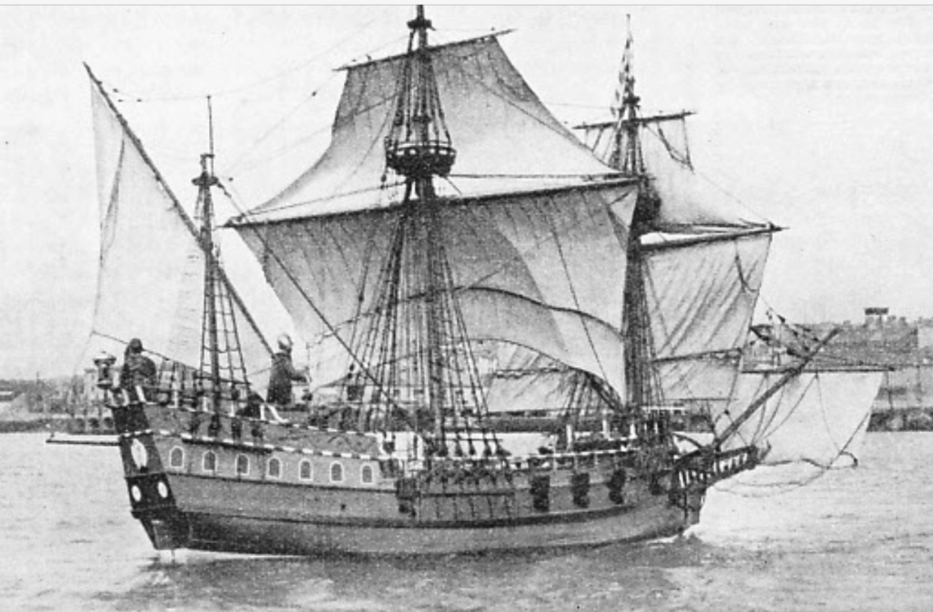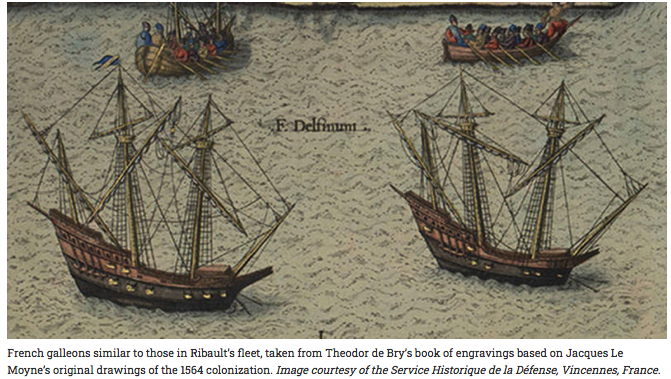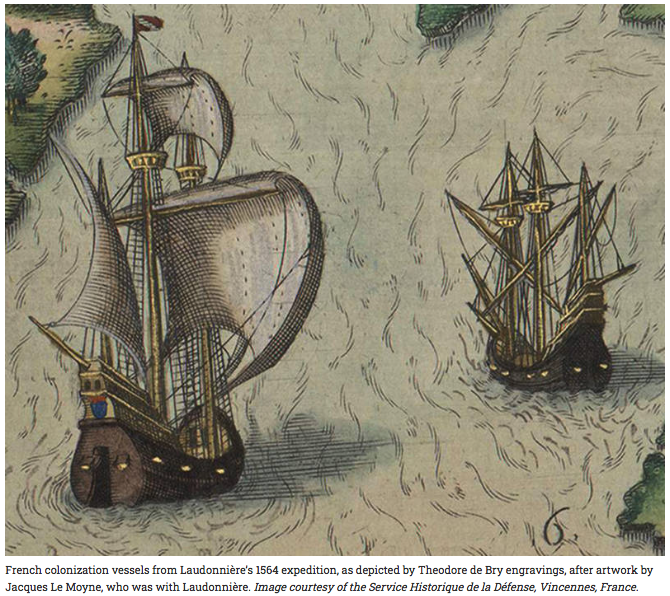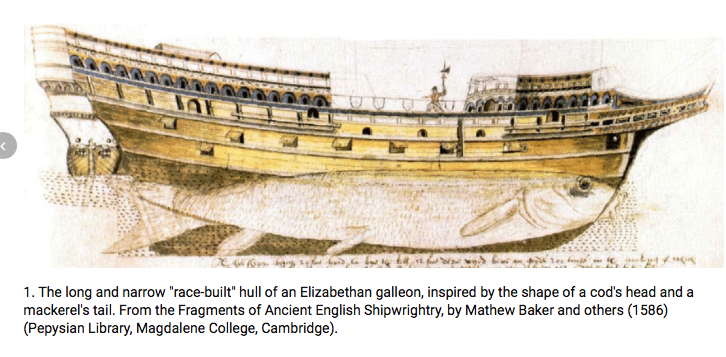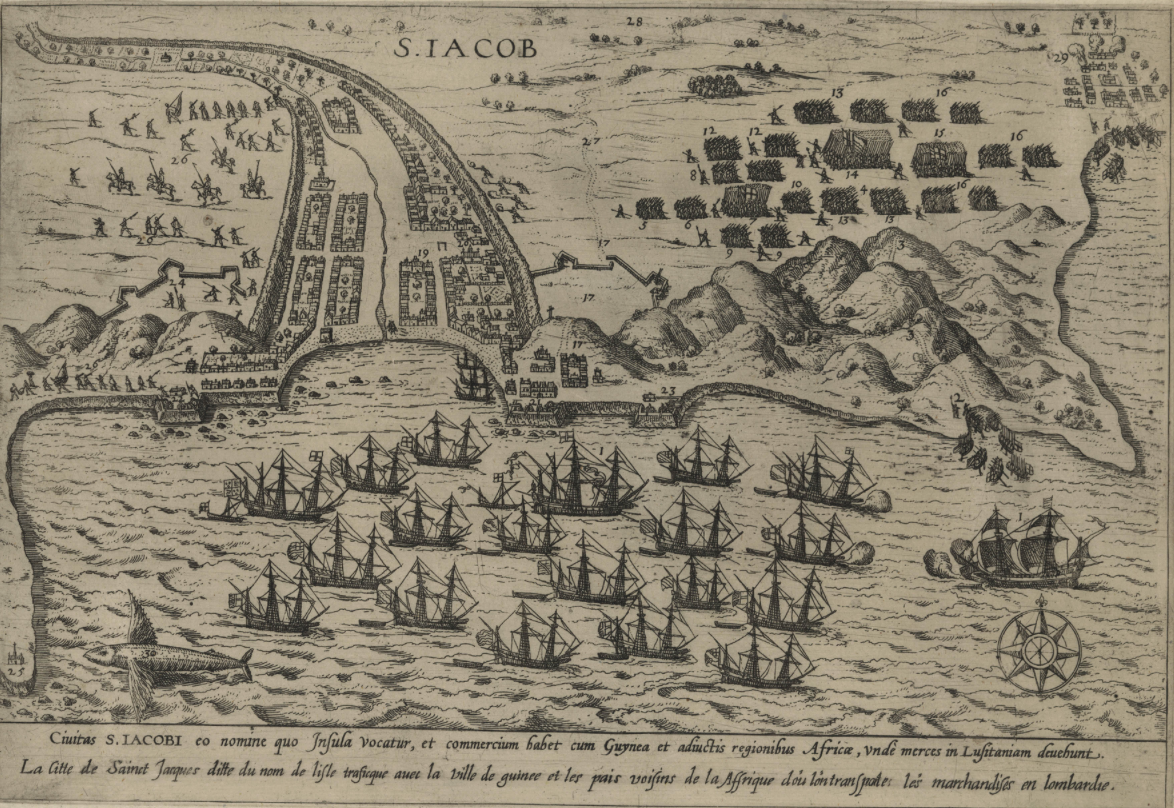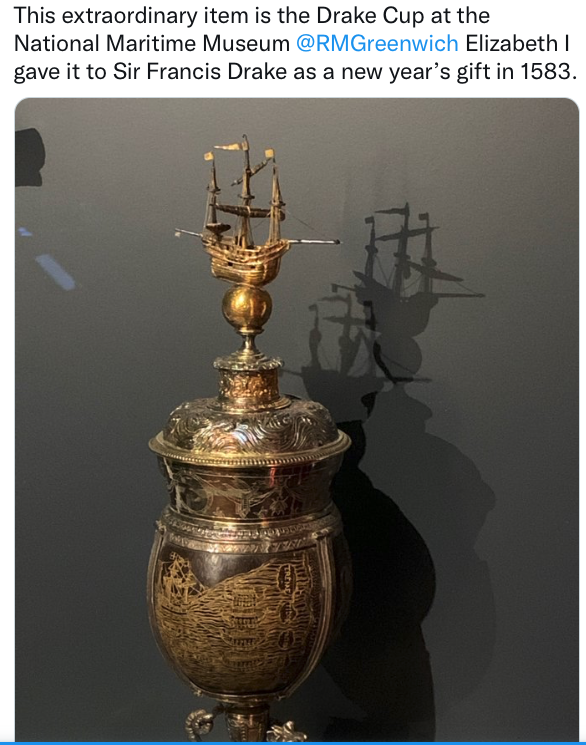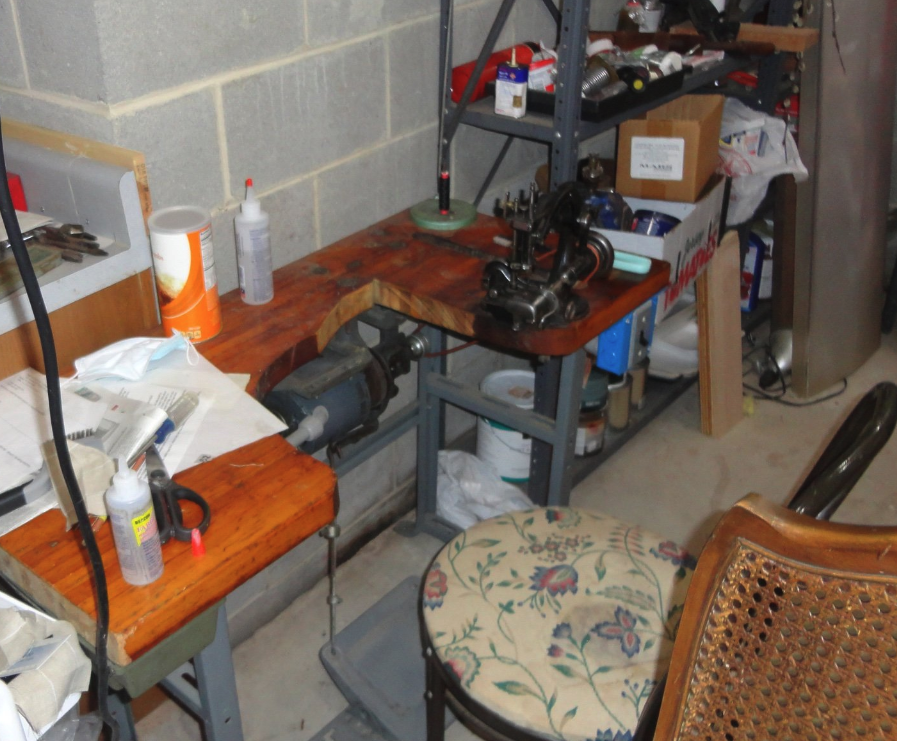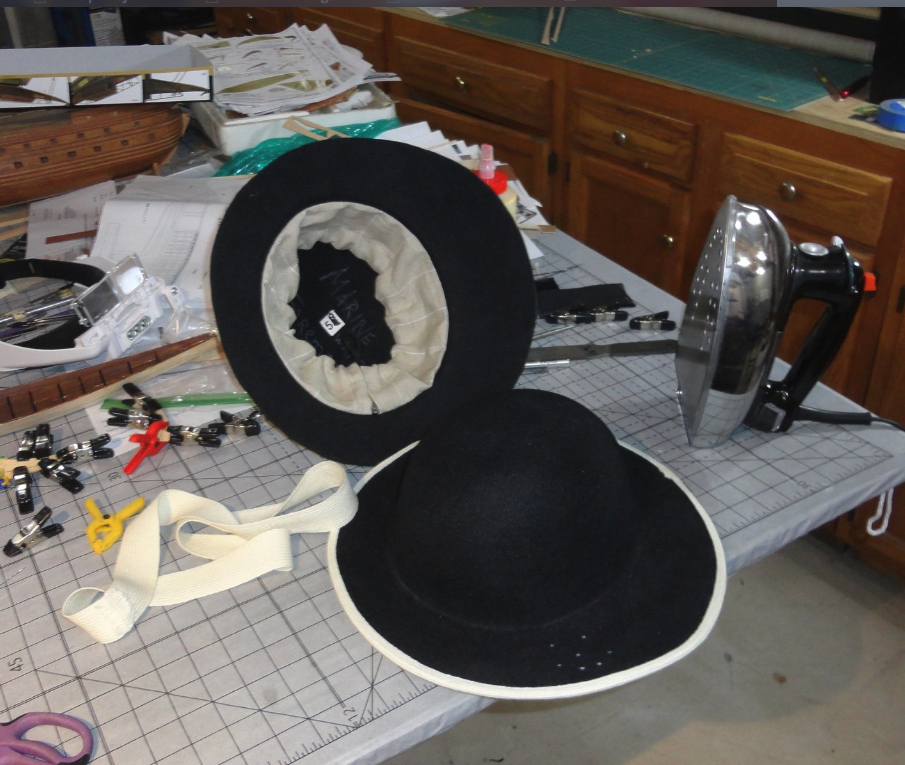-
Posts
1,439 -
Joined
-
Last visited
Content Type
Profiles
Forums
Gallery
Events
Everything posted by Snug Harbor Johnny
-
Ahh, the 1:120 version - well thought of by many. I believe included was a second set of yard with the studding sail booms molded in the inward position. With the boom out, sails are recommended,
- 28 replies
-
- Cutty Sark
- Revell
-
(and 1 more)
Tagged with:
-
Ahoy Jim ! By 'Captain's walkway' (a modern term?) I mean the 'wrap-around' gallery, or promenade that goes around the stern ... nothing to do with a quarterdeck or even a poop deck. The wrap-around walkway was present on many Spanish ship and on larger warships of various nations. Poking around, there is an entry in the Plymouth Black Book concerning Drake building the Pelican at Plymouth in 1575. His circumnavigation (after a couple false starts) began from Plymouth in January of 1578 - so the Pelican (to become the Golden Hind later) was about 2 1/2 years old, and 3 years old by the time Da Silva saw it, ergo it was not 'new'. Since it looked 'French" to Da Silva, it was most likely the latest "race built" type first adopted by the French. The term 'race' was from the French rase' - meaning shaved - in that the poop deck was removed. You show a number of artists' depictions of the vessel that are modern, or well beyond the 16th century. You have to take them as conjectural, all with likely good points - some getting closer to the mark, just as the more darts you throw at a dartboard the better your chances of getting one near the center. Weighting the period testimony and period drawings more heavily, I think the (half scale) sailing version photo you posted come very near to the mark. The Baker log has many great details, and should be looked at for tips and techniques. In the end, no one can say for sure 'exactly' what the GH looked like. But then most ships go through many modifications, and as experience builder note, one should try and portray a given time in a vessel's life (e.g., Polris before Shackleton bought it, as modified in England before the expedition, as modified in South America before setting out for Antartica, and stuck on the ice shelf prior to sinking. Each will have a different appearance.) Ergo, the way GH looked on the big voyage may well have been modified after the return so there could be a big show the next year when the French Ambassador dubbed Drake a Knight in the presence of Queen Elizabeth (my mistake to think she did the dubbing herself, since that might seem to put too much honor on who the Spanish considered a pirate) aboard a refurbished GH. So one could imagine a lot of added decoration and pre haps a stern walkway as well ...
-
I did some research a while back (buried now in my papers somewhere ... and I've commented in another build log in the past, which might be hard for me to find) on the most likely configuration of the Golden Hind (GH), which has long been depicted with great variation as to size, armaments, decoration, etc. - in that the original is long gone and with out a definitive artist's sketch or painting naming it. The recorded testimony of Nuno Da Silva (the Portuguese navigator capture by Drake on his circumnavigation) to the Spanish authorities and also to the Inquisition provide information on the GH by someone qualified to make those assessments. Reading a translation of the entire documents was a fascinating account of the voyage from the Caribbean to the West coast of Mexico, where Da Silva was let off. He stated that the GH was 220 tons (in Old Portuguese tons), and that converts to about 180 modern tons. The size of the GH was about the size of the modern replica you have posted photos of (102' on deck) ... except ... note the bulging nacelles added at the waterline that were needed to make the replica seaworthy. The 'as built' replica with a 20' beam proved unseaworthy, and the effective addition of a couple feet on either side at the waterline solved the problem - and point to a proper beam of 24 - 25 feet at the waterline. This would have added more breadth on deck, as the hull lines would flow smoothly up from the waterline with some tumblehome. Da Silva stated the broadside was 7 guns per side through gun ports, plus 4 at the bows (2 astern as typical, and 2 forward), and that the ship was not new and of French style. You note the problems that would exist trying to load cannon on the weather deck, and Da Silva testified that they were all below (thus having enough room to operate fully, protected from the weather and adding stability to the ship by lowering the center of gravity). So only some anti-personnel rail guns may have been above deck. Some contemporary depictions are included below: Note that there are no 'Captain's walk' on any of the above (or below) depictions. In the Elizabethan picture above, there is a broadside of 7 (the hatch below the row of gun ports may be a 'communication' port - much like the one on the Warship Vasa. There are 2 guns astern, and note the port for a forward firing gun at the bow (there would be another on the port side) - also like the ones on the Vasa. This is very likely what the GH hull looked like. The high angle of the bowsprit at that time would keep the bowsprit yard with sail above the line of sight of the near-forward pointing gun ports. Above is a depiction of Drakes 'Caribbean Fleet' (a later venture), and none of the ships have a Captains walk - not even the largest (one anchored and one entering). The ship entering (firing a salute from the aforementioned forward guns) would be like the GH. The Drake cup, the base of which is from a coconut given to the Queen by Drake, given back to Drake as a gift from the Queen, has a 3D silver miniature GH on the lid, as well as an engraved GH on the bowl from an episode of the circumnavigation. There is no Captain's walk on either. Spanish ships of that era (and some other nationalities) did have captains walks, and there are pictures of these extant. My theory is that they look fancier, and so later artists depicting the GH (then a ship of fame) with such a stern walkway because ... it just looks better. The condition of the GH, that barely was able to limp home with treasure aboard, was likely poor. So perhaps in the time between the ship's return and the knighting ceremony for Drake in a new docking place on the Thames, the GH was spruced up a bit up the Deptford creek and had any ornamentation re-painted - or even expanded upon. The name change from Pelican to GH happened during the voyage, so the idea of a gilded hind as a figurehead (as well as elaborate E.R. and heraldry on the stern) seem either artistic license, or something added after the voyage.
-

New Member - Some modeling experience
Snug Harbor Johnny replied to Dave Wells's topic in New member Introductions
Welcome aboard mate ! Let' see ... 5/64 is not used much these days as a 'scale', so I'll have to try and figure. If the cannon is 5/8" long, that would be .625". Now in the scale of 1:128 (not uncommon in "old' kits, like Scientific models sold in the 70s) .625 x 128 = 80" ... or 6 feet 8inches long ... perhaps a plausible size. Looking on line at a data point (if it is the same Essex) a hull of 185' at 1:128 scale would be about 17.3" ... (185/128 x 12) also a plausible model size. So if MS doesn't have anything suitable, (and my educated guesses are right) you might try looking on line for model cannons that are 1:128 scale. -

Case or no case?
Snug Harbor Johnny replied to Bill97's topic in Modeling tools and Workshop Equipment
I noticed the high price of plexiglass also ... but saw that thinner (and less heavy) acrylic sheets were much less. So when I suggested acrylic, I wasn't referring to the higher priced polycarbonate (plexiglass). Glbarlow said that his models are not behind a barrier, and that he uses a gentle blower (perhaps a hair dryer blowing at low speed without heat) at intervals (quarterly?) to keep dust from accumulating. This is something I might try first, before going to the trouble to install any acrylic. This is because our home has forced air HVAC for heating/cooling, and there is a BIG pre-filter that has an accordion shape for more surface area (the kind that removes allergens pollen) right before the air circulator. I change this at least twice a year, and order replacement filters in a carton with 4 - and they cost $35 each (much lower than either the HAVAC man or retail). The air handler runs continuously - which is better for the heating/cooling system and house comfort as well. Its amazing how much stuff is taken out of the air by the filter. -

Case or no case?
Snug Harbor Johnny replied to Bill97's topic in Modeling tools and Workshop Equipment
I've pondered of this situation before, and thought of one approach to try in our parlor. A long shelf would be installed along one wall, perhaps just above 'chair rail' height, using brackets available in most home centers. The brackets would be fastened into the studs behind the wall, found with a stud finder - they are generally spaced at 16" intervals, but can vary. Wood shelving would lie on the brackets (and there are often a variety of available finishes - or fashion your own). To get the length required, shelf ends can be held together on on the underside using thin metal joining strips fastened with short screws. Then a little above the tallest ship to go on that level, another long shelf is installed above ... and one could perhaps have three levels to display models. At intervals on the front edges of the shelving would be spaced small threaded rods with the outside ends bent 90 degrees to make an "L" shape. One could hang acrylic sheets from these retainers (through holes drilled into the acrylic), and each piece would be trimmed just long enough to cover the gap between the shelves (there would be a clear panel on the ends of the shelves. This arrangement would keep out most of the dust and provide a good view of the models, yet the models would be easily accessible by lifting and removing the acrylic sheet in front. It would also be easy to re-arrange the display as desired. -
Rather than try to modify some of the bulkheads before assembly, assemble them first and then deal with any bulges in the "fairing" process. If you flex a piece of thin, straight spring wire stock over the bulkheads, it will be easy to see any bulge. Then by sanding and frequently re-checking with the wire, you can achieve smooth lines/transitions.
-
My bearding line is where I stop shaving ... 😉 'Don't think 1.5mm (about 0.060") will make much difference, but you're likely to reduce the frames a bit when fairing, and then there is liberal sanding of the first planking to perfect the lines - which will take more off the thickness (just don't sand through). Thus you can easily whittle down the difference to 0.75mm without fretting over the frames.
-
Whatever you produce, I’d be interested in. I have had this kit for two years - and initially did a kit review because of the overall value to an intermediate modeler. I studied the known lines of the original hull, and found that the kit bulkheads can be easily altered (if desired) near the bow (to reduce the flare slightly) and stern (for a little more fullness). I’ve followed every build of Endurace with interest to see every modification that could be considered when I eventually do it myself. The kit configuration appears to be as it set sail from South America - with a covered steering mechanism and the dog kennels. I bought 3D brass stanchions for the railings (an upgrade from the PE verticals), as well as better deadeyes and blocks … also a Rope Rocket from Syren to make my own scale rope, and a 2 bladed screw. The 3 bladed propeller provided came in handy for the Gorch Fock restoration in progress - to gain better familiarity with rigging. So whenever you make extra 3D items, feel free to private message me to make any arrangement. Smooth sailing, mate ! Johnny
-
'Looks like you're going to leave the "Captain's walk" on ... I suppose when the original was repainted and fancied-up prior to the Queen Knighting Drake, they might have added one for show. Her saving it 'for posterity' (so Queen Elizabeth thought at the time) made it the second 'museum ship' in history - the first being the ship of Theseus in ancient Athens, which was continually repaired with new wood for hundreds of years ... until none of the original wood remained. This led to the logic problem of, 'is it really the ship of Theseus ?'. The GH was in such bad shape in, what, 60 or so years that what was left got buried in situ. I've wondered why there has been no effort to do archeology in what is thought to be her resting place using modern techniques. That would likely reveal the hull lines and gunport locations, as well as settle the question about the Captain's walk.
- 30 replies
-
- Golden Hind
- Airfix
-
(and 1 more)
Tagged with:
-
I'd loathe drilling a hole through a relatively thin mast section to accommodate a halyard ... even if that is 'called for'. That creates a weak point, unless that portion is reinforced by a metal collar. I'm opting for a pair of blocks on either side (jeers fashion), with the line in one continuous piece that goes through a block (for a single halyard) on the other side ... for a project still being mulled over.
- 431 replies
-
- Flying Fish
- Model Shipways
-
(and 2 more)
Tagged with:
-
Will there be any latrine holes in the bottom of the forecastle ? Obviously, the heads will be concealed within the structure, so there's no need to construct the seats ... unless you want to - in case anyone wants to examine the underside of the forecastle using a mirror. Hmmm, kinda like some show cars where the undercarriage gets painted-up nice and they show it off with a mirror on top of a wheeled floor jack.
-
Now the Mary Rose was built way before there was anything like a Sears catalog, but a source indicates that in Roman times there was a sponge on a stick placed in a water bucket at the latrines, and all the men used the same implement to clean themselves. Maybe there was something like that in Henry's time.
-

Remains of 500 year-old shipwreck: Dated 2019
Snug Harbor Johnny replied to Allegheny's topic in Nautical/Naval History
Even if the Mary Rose Forecastle was in pieces, they could still put the 'jigsaw' back together with sufficient funding. -
You can find something uncommon on Amazon or eBay by looking every day ... takes a schedule, and may take weeks or months - but don't you know, in time what you're looking for may pop up (on eBay more likely - but with books , second hand sellers do log new items as they get them ... otherwise they'd run out of books to sell). Case in point: I needed to find a hat band sewing machine - the kind with a very HIGH throat to accommodate the wide brim of 'old time' hats. This is because I took on piecework to make repro Colonial soldiers' hats (tricorns), and was having a heck of a time sewing linen sweatbands inside the crown on a regular sewing machine. Since a lot of hat manufacture went overseas, so did a lot of the machines to to the work ... and those still in the U.S. are closely held. A classic Singer would have been preferred, but a Wilcox and Gibbs chain stitch machine would do (with going around twice incase someone wanted to monkey with either 'loose' thread at the beginning or end, which are needed to 'lock' the stitching. Pull the wrong thing and a whole line of sewing can come undone, explaining why some Civil War soldier uniform components that were not mended promptly would come apart ... blamed on 'shoddy' work, but procurers contracted with low bidders who bought loop machines that cost half of what lockstitch machines were going for. Anyway, I looked faithfully for over a year, and finally - on eBay ... a small concern way out on Long Island N.Y. was selling off two chain stitch machines. I bought one and drove up immediately to pick the better one. Even then, I had to do a lot of work on it to go into production. The moral is that patience can pay off ... sort of like fishing on a slow day.
-
Since the forecastle houses the 'heads', do you want to cut out waste holes for, say, a three-holer on each side? Having to carry waste out in buckets to throw over the side is a non-value added activity ... and risks soiling the side of the hull - or slipping in heavy swells and spilling it over the deck!
-

Ratline thread recommendations 1/75 scale
Snug Harbor Johnny replied to John AA's topic in Masting, rigging and sails
Keith is right, as I've used both Gutermann versus Mettler poly on the Siren 'Rope Rocket', and found Gutermann has minimal 'fuzz'. Making rope is cheaper, and you can customize it as needed by changing the number of threads in the 'set-up' ... but it is a process you have to learn to 'get right', takes time to do, and the length is limited by the room available. So I can understand buying rope from the available sources. Builders put so much time and effort into their models, so its a wonder that some will use 'fuzzy' rigging thread that does not have the nice definition that spun scale rope has. Photo close-ups DO accentuate the fuzz, which is less noticeable at a distance. BUT, a model made by my dad 70 years ago had rigging made of cotton thread that just disintegrated all by itself. Parts held by thread either fell apart, and rigging crumbled by the slightest touch. This was told to me after the fact by the brother who had the clipper model, and since he thought it a total loss - the model was trashed. Had I known this before he made that decision, I could have offered to replace all the rigging with poly scale rope - a bit of trouble, but worth it for an heirloom. -

New member, happy to be here
Snug Harbor Johnny replied to Joanie's topic in New member Introductions
Ahoy Joanie ! 'Glad to have you aboard. You've done VERY well so far, and I understand your frustrations that the instructions and illustrations in the Billing kit are somewhat lean. But I have a suggestion to offer that will come in most handy at the stage of the build you are in. It is a book (now out of print, but a copy can be found on-line ... I got mine through Amazon.) It is "Bluenose II - Saga of the Great Fishing Schooners" by L.B. Jenson published by Nimbus (1994) ... Soft cover 11 x 14 format of the original hand drafted drawings with cursive text. Don't be put off that the subject is the Bluenose 2, as the author has included hull drawings of Bluenose (I) on pp.66-67 - and notes that the masting and rigging of the two schooners were virtually identical. So the copious and detailed drawings of everything above deck level (sails, rigging, blocks, etc.) are perfectly useable for both Bluenose and Bluenose II. (As can be found today on-line, there was a controversial 're-build' of Bluenose II where many changes were made, although the 'new' ship looks much the same at a distance. The A.L. kit seems to model the present version, so I'll use Jenson's book to be closer to the original Bluenose II.) The Jenson book goes FAR more into the origin, contemporary schooners, the life of the fisherman and much more. I can heartily recommend this book, and can't imagine building a model of Bluenose or Bluenose II without consulting it. Fair sailing ! Johnny -
1.) I've always been a tinkerer (and formerly a manufacturing engineer). Modeling is a way to tinker any time of day or year, and is portable to a fair degree if downsizing is in my retirement future. 2.) It reminds me of working on my kid-sized bench building models alongside my dad building larger models on his adult work bench. It is a hobby I did until my late teens, when higher education and 'life' took over - and something I have returned to in old age. 3.) I've always been a 'knowledge junkie' as well with history, and its been non-stop learning ever since finding the MSW forum.
About us
Modelshipworld - Advancing Ship Modeling through Research
SSL Secured
Your security is important for us so this Website is SSL-Secured
NRG Mailing Address
Nautical Research Guild
237 South Lincoln Street
Westmont IL, 60559-1917
Model Ship World ® and the MSW logo are Registered Trademarks, and belong to the Nautical Research Guild (United States Patent and Trademark Office: No. 6,929,264 & No. 6,929,274, registered Dec. 20, 2022)
Helpful Links
About the NRG
If you enjoy building ship models that are historically accurate as well as beautiful, then The Nautical Research Guild (NRG) is just right for you.
The Guild is a non-profit educational organization whose mission is to “Advance Ship Modeling Through Research”. We provide support to our members in their efforts to raise the quality of their model ships.
The Nautical Research Guild has published our world-renowned quarterly magazine, The Nautical Research Journal, since 1955. The pages of the Journal are full of articles by accomplished ship modelers who show you how they create those exquisite details on their models, and by maritime historians who show you the correct details to build. The Journal is available in both print and digital editions. Go to the NRG web site (www.thenrg.org) to download a complimentary digital copy of the Journal. The NRG also publishes plan sets, books and compilations of back issues of the Journal and the former Ships in Scale and Model Ship Builder magazines.



